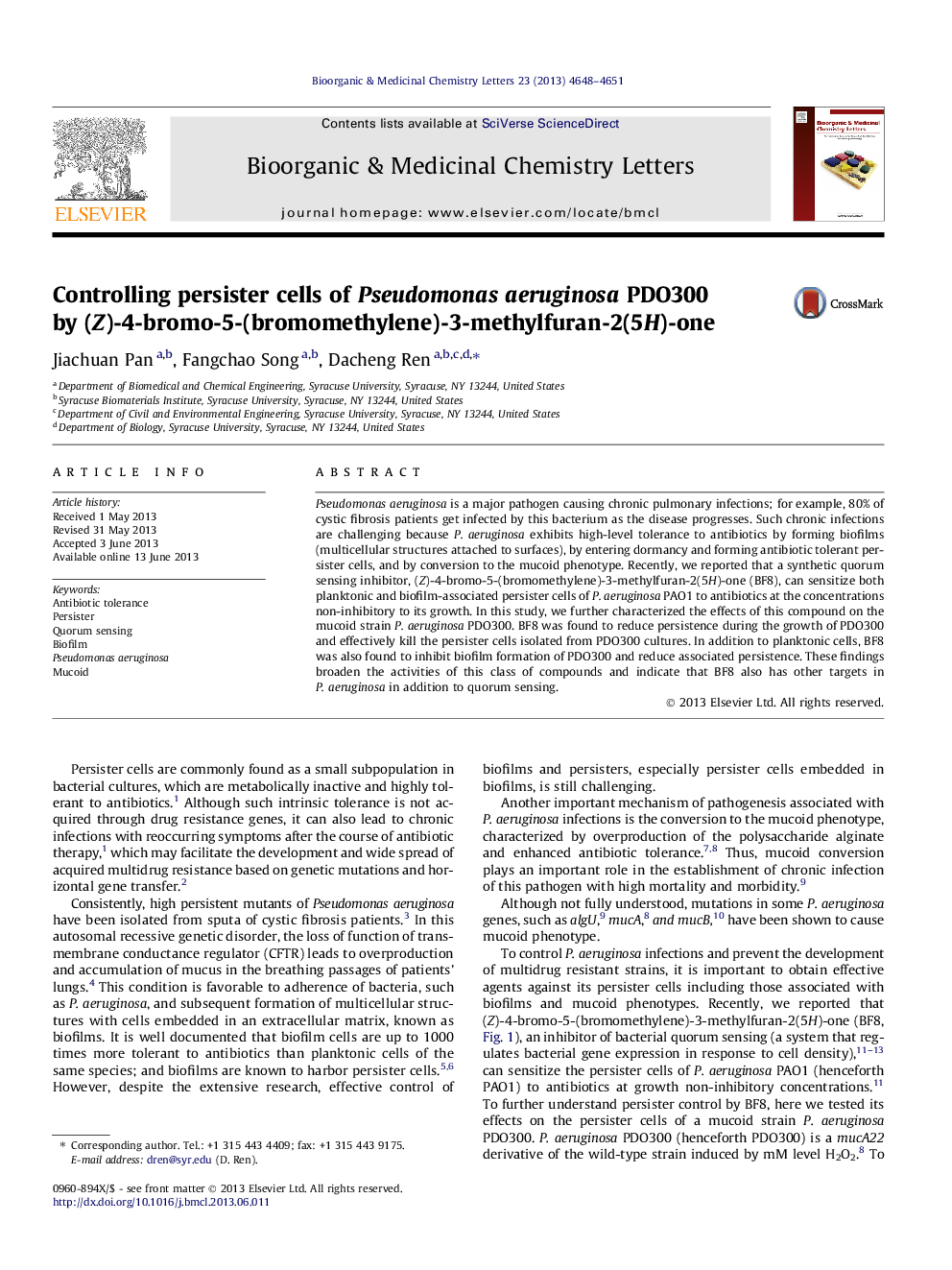| کد مقاله | کد نشریه | سال انتشار | مقاله انگلیسی | نسخه تمام متن |
|---|---|---|---|---|
| 1372307 | 981868 | 2013 | 4 صفحه PDF | دانلود رایگان |

Pseudomonas aeruginosa is a major pathogen causing chronic pulmonary infections; for example, 80% of cystic fibrosis patients get infected by this bacterium as the disease progresses. Such chronic infections are challenging because P. aeruginosa exhibits high-level tolerance to antibiotics by forming biofilms (multicellular structures attached to surfaces), by entering dormancy and forming antibiotic tolerant persister cells, and by conversion to the mucoid phenotype. Recently, we reported that a synthetic quorum sensing inhibitor, (Z)-4-bromo-5-(bromomethylene)-3-methylfuran-2(5H)-one (BF8), can sensitize both planktonic and biofilm-associated persister cells of P. aeruginosa PAO1 to antibiotics at the concentrations non-inhibitory to its growth. In this study, we further characterized the effects of this compound on the mucoid strain P. aeruginosa PDO300. BF8 was found to reduce persistence during the growth of PDO300 and effectively kill the persister cells isolated from PDO300 cultures. In addition to planktonic cells, BF8 was also found to inhibit biofilm formation of PDO300 and reduce associated persistence. These findings broaden the activities of this class of compounds and indicate that BF8 also has other targets in P. aeruginosa in addition to quorum sensing.
Figure optionsDownload as PowerPoint slide
Journal: Bioorganic & Medicinal Chemistry Letters - Volume 23, Issue 16, 15 August 2013, Pages 4648–4651